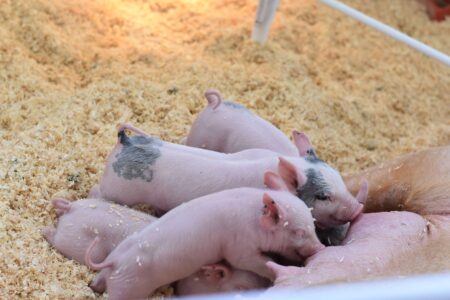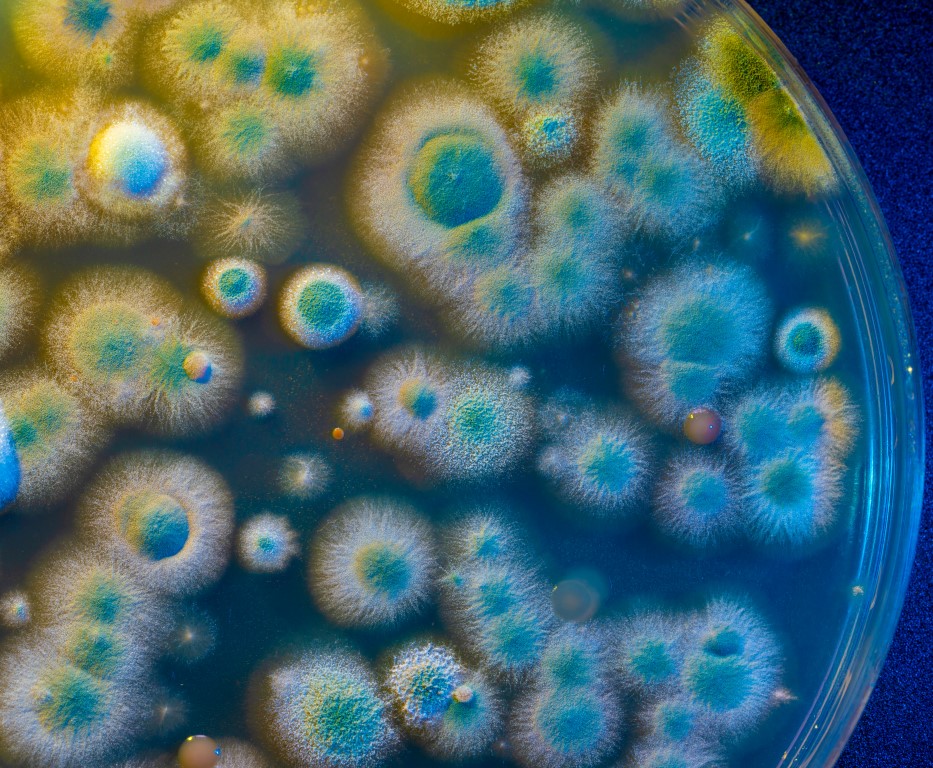The swine gut microbiome is important for gastrointestinal health, immune function and digestion. Around 70% of the immune cells in swine are found in the gastrointestinal tract, highlighting the importance of the gut for overall health. The European ban on antibiotic growth promotors in the animal industry has stimulated interest in swine gut microbiome research. In addition to animal health, the gut microbiome also influences productivity and microbiological safety.
 The gut microbiome in pigs converts fibre from the diet into short chain fatty acids, which are important in maintaining gut barrier function. By identifying microbes that perform this conversion, the opportunity to modify the feed or environment of these animals to improve their immune function arises. A highly diverse microbiome is also seen as beneficial in high-productivity environment like the swine industry. Microbial diversity is better able to respond to changes in environments and prevent the establishment of pathogens.
The gut microbiome in pigs converts fibre from the diet into short chain fatty acids, which are important in maintaining gut barrier function. By identifying microbes that perform this conversion, the opportunity to modify the feed or environment of these animals to improve their immune function arises. A highly diverse microbiome is also seen as beneficial in high-productivity environment like the swine industry. Microbial diversity is better able to respond to changes in environments and prevent the establishment of pathogens.
In swine, microbial fermentation in the hindgut is less important than enzymatic hydrolysis in the stomach and small intestine for the release of nutrients from feed. However, the gut microbiota does play an important role in maintaining the health of the gut, and some nutrients are made available from undigested food in the cecum and large intestine by the microbiota. Feed efficiency can therefore be approached from two angles in swine: firstly, but maintaining the health of the gastrointestinal tract to avoid illnesses such as diarrhoea that wastes feed, and secondly by modifying the hindgut microbiota to increase its efficiency in releasing nutrients from feed.
The gut microbiome is a key requirement for the normal development of gut immune function, as pigs grown in a sterile environment develop atypical gut morphology and functions. An important phase of development in piglets is weaning: profound changes to the gut microbiota occur as the animals transition from milk to solid food. This is also a time when feed efficiency can be negatively impacted by diarrhoea caused by gut microbial dysbiosis, and piglets are at risk of higher mortality around the time of weaning. Certain characteristic changes occur in piglets that develop diarrhoea. Prevotella, Sutterella, Campylobacter, and Fusobacteriaceae increase, while Firmicutes decreases in diarrhoeic piglets.8 Functional changes include a reduction in genes for carbohydrate metabolism and related to gut function. Several interventions that modify the gut microbiota have been shown to reduce diarrhoea and promote gut health in piglets, thereby improving feed efficiency in the early post-weaning period. For example, fermentation of feed with lactic acid bacteria reduces the pH of feed and increases Lactobacillus in the faeces of piglets. Inoculation of piglets with the gut microbiota of mature, healthy pigs promotes the healthy development of the post-weaning piglet microbiome. Careful analysis of microbiome changes in weaning piglets can identify novel interventions to reduce diarrhoeal incidence during this critical phase of development, thereby improving feed efficiency.
 There are several ways that the gut microbiome can directly affect the amount of energy and nutrients that can be extracted from food by swine. Enzymes in the porcine hindgut degrade the otherwise undigestible cell wall of plants and convert to short chain fatty acids, which are used as an energy source. The microbes themselves can also be a source of amino acids, which are also required for optimal pig growth. Several studies in pigs have found differences in the microbiome of high-efficiency compared to low-efficiency animals within the same group. For example, Lactobacillus and Ruminococcus are more prevalent in animals with high feed efficiency. While Lactobacilli are more likely to assist in feed efficiency by maintaining a healthy gut and preventing diarrhoea, Ruminococci can efficiently convert dietary fibre to short chain fatty acids, increasing the overall accessible energy content of the diet. Further research is needed to establish how to modulate the gut microbiota to enhance feed efficiency in pigs.
There are several ways that the gut microbiome can directly affect the amount of energy and nutrients that can be extracted from food by swine. Enzymes in the porcine hindgut degrade the otherwise undigestible cell wall of plants and convert to short chain fatty acids, which are used as an energy source. The microbes themselves can also be a source of amino acids, which are also required for optimal pig growth. Several studies in pigs have found differences in the microbiome of high-efficiency compared to low-efficiency animals within the same group. For example, Lactobacillus and Ruminococcus are more prevalent in animals with high feed efficiency. While Lactobacilli are more likely to assist in feed efficiency by maintaining a healthy gut and preventing diarrhoea, Ruminococci can efficiently convert dietary fibre to short chain fatty acids, increasing the overall accessible energy content of the diet. Further research is needed to establish how to modulate the gut microbiota to enhance feed efficiency in pigs.



 The gut microbiome in pigs converts fibre from the diet into short chain fatty acids, which are important in maintaining gut barrier function. By identifying microbes that perform this conversion, the opportunity to modify the feed or environment of these animals to improve their immune function arises. A highly diverse microbiome is also seen as beneficial in high-productivity environment like the swine industry. Microbial diversity is better able to respond to changes in environments and prevent the establishment of pathogens.
The gut microbiome in pigs converts fibre from the diet into short chain fatty acids, which are important in maintaining gut barrier function. By identifying microbes that perform this conversion, the opportunity to modify the feed or environment of these animals to improve their immune function arises. A highly diverse microbiome is also seen as beneficial in high-productivity environment like the swine industry. Microbial diversity is better able to respond to changes in environments and prevent the establishment of pathogens. There are several ways that the gut microbiome can directly affect the amount of energy and nutrients that can be extracted from food by swine. Enzymes in the porcine hindgut degrade the otherwise undigestible cell wall of plants and convert to short chain fatty acids, which are used as an energy source. The microbes themselves can also be a source of amino acids, which are also required for optimal pig growth. Several studies in pigs have found differences in the microbiome of high-efficiency compared to low-efficiency animals within the same group. For example, Lactobacillus and Ruminococcus are more prevalent in animals with high feed efficiency. While Lactobacilli are more likely to assist in feed efficiency by maintaining a healthy gut and preventing diarrhoea, Ruminococci can efficiently convert dietary fibre to short chain fatty acids, increasing the overall accessible energy content of the diet. Further research is needed to establish how to modulate the gut microbiota to enhance feed efficiency in pigs.
There are several ways that the gut microbiome can directly affect the amount of energy and nutrients that can be extracted from food by swine. Enzymes in the porcine hindgut degrade the otherwise undigestible cell wall of plants and convert to short chain fatty acids, which are used as an energy source. The microbes themselves can also be a source of amino acids, which are also required for optimal pig growth. Several studies in pigs have found differences in the microbiome of high-efficiency compared to low-efficiency animals within the same group. For example, Lactobacillus and Ruminococcus are more prevalent in animals with high feed efficiency. While Lactobacilli are more likely to assist in feed efficiency by maintaining a healthy gut and preventing diarrhoea, Ruminococci can efficiently convert dietary fibre to short chain fatty acids, increasing the overall accessible energy content of the diet. Further research is needed to establish how to modulate the gut microbiota to enhance feed efficiency in pigs.
